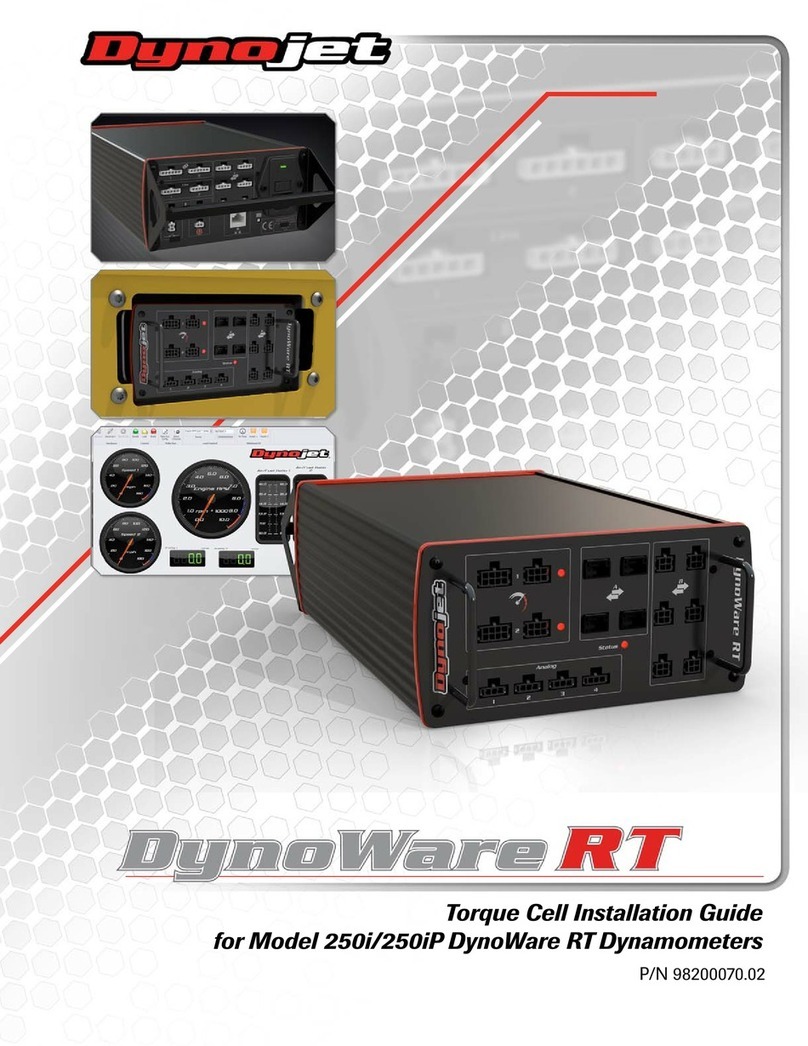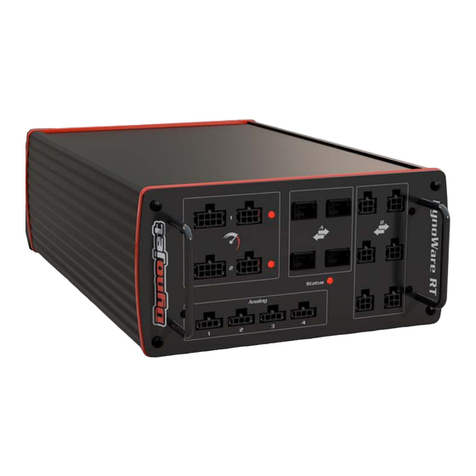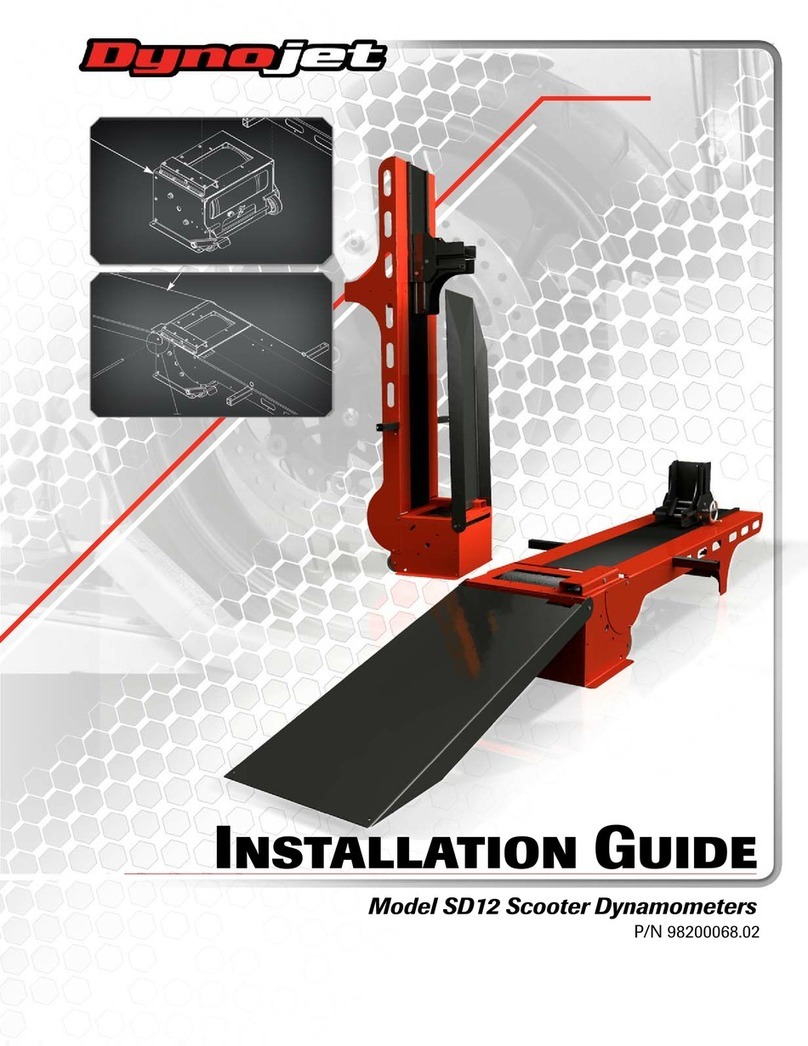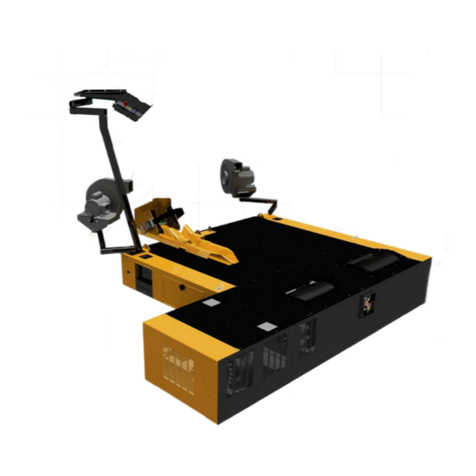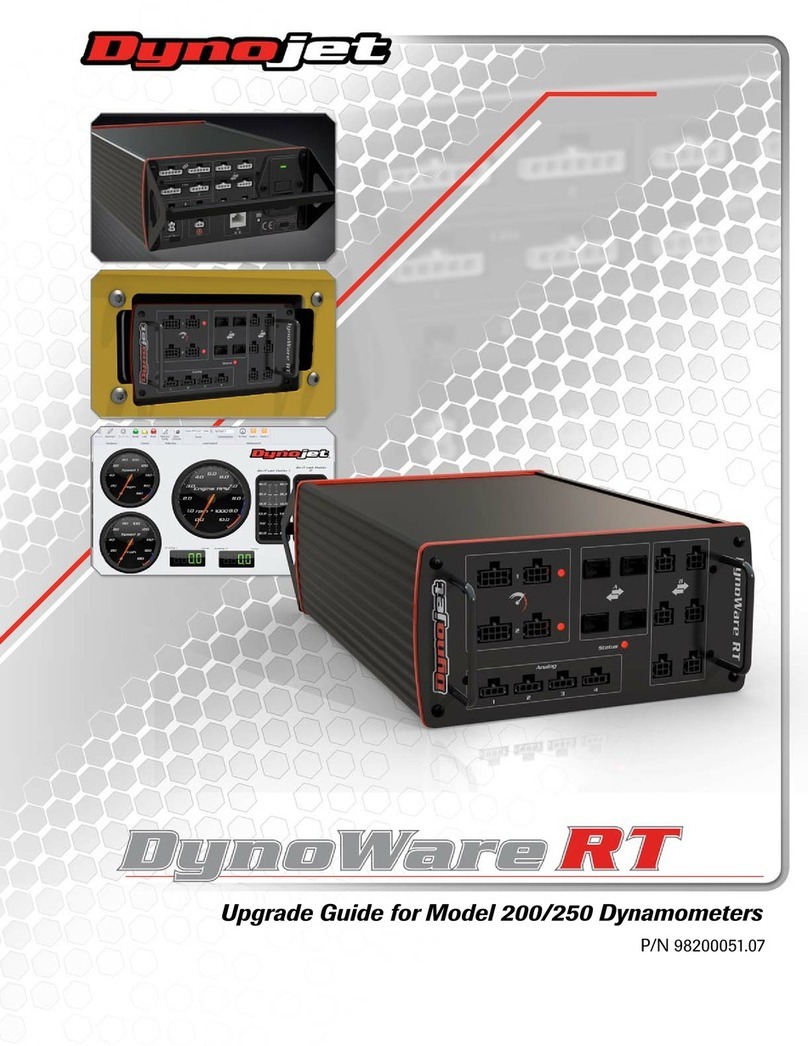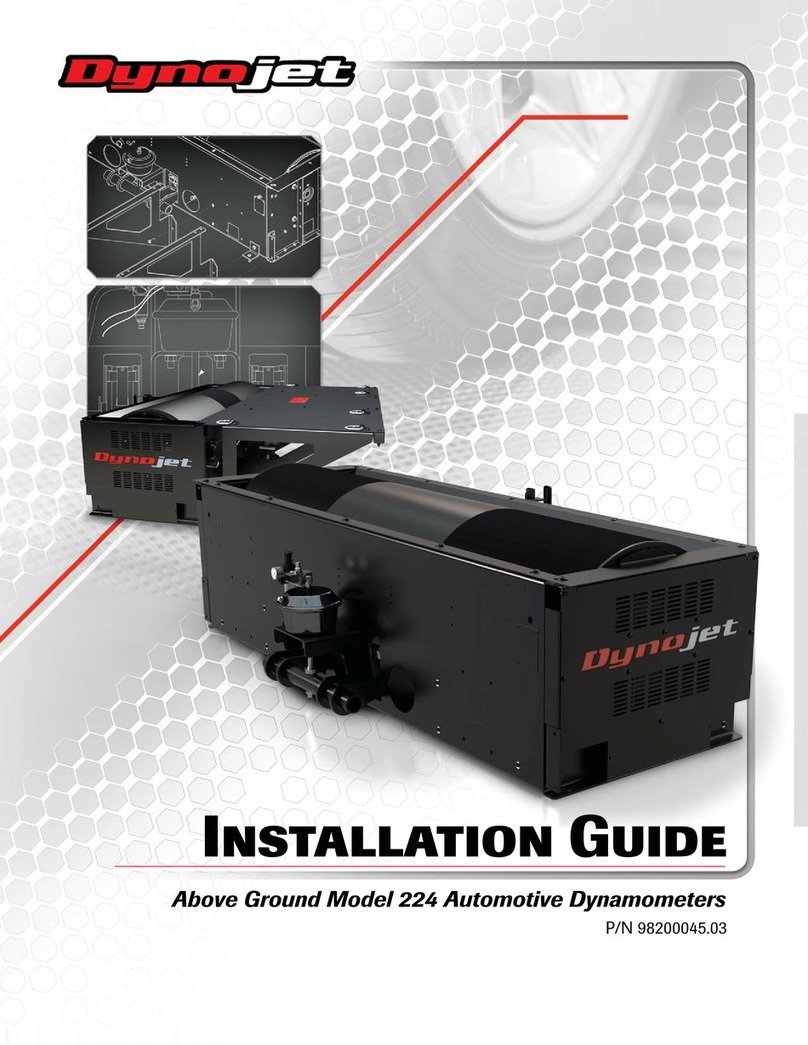
Above Ground Model 250i Motorcycle Dynamometer Installation Guide
ii
Above Ground Model 250i Motorcycle Dynamometer Installation Guide
ii
Chapter 2 Dyno Installation
Unpacking and Inspecting the Dyno . . . . . . . . . . . . . . . . . . . . . . . . . . . . . . . . . . . . . 2-2
Dyno Installation . . . . . . . . . . . . . . . . . . . . . . . . . . . . . . . . . . . . . . . . . . . . . . . . . . . . . . . 2-10
Removing the Dyno from the Crate . . . . . . . . . . . . . . . . . . . . . . . . . . . . . . . . . . . . . 2-10
Routing the Power Cable . . . . . . . . . . . . . . . . . . . . . . . . . . . . . . . . . . . . . . . . . . . . . 2-12
Battery Installation . . . . . . . . . . . . . . . . . . . . . . . . . . . . . . . . . . . . . . . . . . . . . . . . . . . . . 2-13
Pickup Card Installation . . . . . . . . . . . . . . . . . . . . . . . . . . . . . . . . . . . . . . . . . . . . . . . . 2-14
Eddy Current Brake Installation . . . . . . . . . . . . . . . . . . . . . . . . . . . . . . . . . . . . . . . . . 2-15
Unpacking the Eddy Current Brake . . . . . . . . . . . . . . . . . . . . . . . . . . . . . . . . . . . . . 2-15
Installing the Eddy Current Brake . . . . . . . . . . . . . . . . . . . . . . . . . . . . . . . . . . . . . . 2-20
Installing the Load Cell . . . . . . . . . . . . . . . . . . . . . . . . . . . . . . . . . . . . . . . . . . . . . . . 2-23
Secure the Dyno and Brake Module to the Floor . . . . . . . . . . . . . . . . . . . . . . . . . 2-25
Support Arm and Monitor Tray Installation . . . . . . . . . . . . . . . . . . . . . . . . . . . . . . 2-26
Installing the Support Arm and Tray . . . . . . . . . . . . . . . . . . . . . . . . . . . . . . . . . . . . 2-26
Cable Routing . . . . . . . . . . . . . . . . . . . . . . . . . . . . . . . . . . . . . . . . . . . . . . . . . . . . . . . . . 2-28
Identifying the Cables . . . . . . . . . . . . . . . . . . . . . . . . . . . . . . . . . . . . . . . . . . . . . . . . 2-28
Installing the DynoWare RT Main Module . . . . . . . . . . . . . . . . . . . . . . . . . . . . . . . 2-30
Routing the Cables . . . . . . . . . . . . . . . . . . . . . . . . . . . . . . . . . . . . . . . . . . . . . . . . . . 2-30
Connecting the Control Panel Cable . . . . . . . . . . . . . . . . . . . . . . . . . . . . . . . . . . . . 2-33
Routing the Power Carriage and Wheel Clamp Cables . . . . . . . . . . . . . . . . . . . . 2-36
Tire Carriage Installation . . . . . . . . . . . . . . . . . . . . . . . . . . . . . . . . . . . . . . . . . . . . . . . 2-38
Side and Top Cover Installation . . . . . . . . . . . . . . . . . . . . . . . . . . . . . . . . . . . . . . . . . 2-42
Load Cell Calibration . . . . . . . . . . . . . . . . . . . . . . . . . . . . . . . . . . . . . . . . . . . . . . . . . . . 2-45
Ramp Bracket . . . . . . . . . . . . . . . . . . . . . . . . . . . . . . . . . . . . . . . . . . . . . . . . . . . . . . . . . 2-50
Ground Hook Installation . . . . . . . . . . . . . . . . . . . . . . . . . . . . . . . . . . . . . . . . . . . . . . . 2-53
Zip Tube . . . . . . . . . . . . . . . . . . . . . . . . . . . . . . . . . . . . . . . . . . . . . . . . . . . . . . . . . . . . . . 2-54
Chapter 3 Accessories
Main Dyno Power . . . . . . . . . . . . . . . . . . . . . . . . . . . . . . . . . . . . . . . . . . . . . . . . . . . . . . . 3-2
Air Brake . . . . . . . . . . . . . . . . . . . . . . . . . . . . . . . . . . . . . . . . . . . . . . . . . . . . . . . . . . . . . . . 3-3
Routing the Air Brake Cable and Air Hose . . . . . . . . . . . . . . . . . . . . . . . . . . . . . . . . 3-3
Installing the Emergency Stop Sticker . . . . . . . . . . . . . . . . . . . . . . . . . . . . . . . . . . . 3-5
Air Brake Final Adjustments and Tests . . . . . . . . . . . . . . . . . . . . . . . . . . . . . . . . . . . 3-9
Changing the Brake Pads . . . . . . . . . . . . . . . . . . . . . . . . . . . . . . . . . . . . . . . . . . . . . 3-10
Adjusting the Brake Pad Clearance . . . . . . . . . . . . . . . . . . . . . . . . . . . . . . . . . . . . 3-15
Air Fuel Ratio Module . . . . . . . . . . . . . . . . . . . . . . . . . . . . . . . . . . . . . . . . . . . . . . . . . . 3-16
Extended Carriage . . . . . . . . . . . . . . . . . . . . . . . . . . . . . . . . . . . . . . . . . . . . . . . . . . . . . 3-17
Installing the Extended Carriage Support Bracket . . . . . . . . . . . . . . . . . . . . . . . . 3-18
Installing the Extended Carriage . . . . . . . . . . . . . . . . . . . . . . . . . . . . . . . . . . . . . . . 3-20
Folding Ramp . . . . . . . . . . . . . . . . . . . . . . . . . . . . . . . . . . . . . . . . . . . . . . . . . . . . . . . . . 3-24
Removing the Ramp from the Crate . . . . . . . . . . . . . . . . . . . . . . . . . . . . . . . . . . . . 3-24
Installing the Ramp on the Dyno . . . . . . . . . . . . . . . . . . . . . . . . . . . . . . . . . . . . . . . 3-29
High Pressure Blower . . . . . . . . . . . . . . . . . . . . . . . . . . . . . . . . . . . . . . . . . . . . . . . . . . 3-32
Installing the High Pressure Blowers . . . . . . . . . . . . . . . . . . . . . . . . . . . . . . . . . . . 3-33
